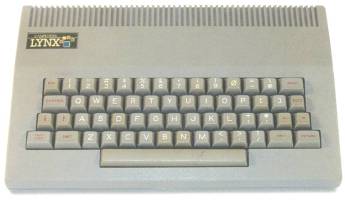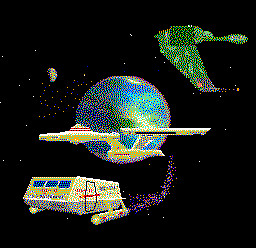
|
Manufacturer |
Camputers (UK) |
Model |
Lynx |
Date Launched |
48K version in February 1983
(Originally scheduled for launch in October 1982.)
96K version in September 1983
128K version in December 1983 |
Price |
Lynx 48K £225
Lynx 96K £299
Lynx 128K £445 |
Microprocessor type |
Zilog Z80A @ 4 MHz (Lynx 48K and 96K)
Zilog Z80B @ 6 MHz in Lynx 128K |
ROM size |
16 kilobytes in 48K model
20 kilobytes in 96K and 128K models
The extra 4KB of ROM contained additional commands for sound effects, and printer driver routines for the serial port. |
Standard RAM |
48 kilobytes
Only 13.75 KB was available for BASIC programs. |
Maximum RAM |
96, 128 or 192 kilobyte versions available, maximum was 256 KB.
No more than 37.5 KB of RAM was available to BASIC. 34 KB was used by the operating system (mainly the display) and the rest could only be used for storing data. |
Keyboard type |
Typewriter style but reported to have poor 'feel' |
Supplied language |
Fairly good structured BASIC, including procedures, REPEAT and WHILE loops, and a full range of mathematical functions. |
Text resolution |
40 x 24 characters
80 x 24 with expanded RAM |
Graphics resolution |
256 x 248 pixels
Up to 248 x 512 or even 512 x 512 pixels when RAM expanded to 128KB or above. |
Colours available |
8
Any pixel could be any colour |
Example Screenshot |

The Lynx could produce quite realistic pictures, thanks to its ability to set the colour of each pixel independently.
|
Sound |
Single channel through internal speaker, but volume was low. |
Cassette load speed |
User-selectable from 600 to 2100 baud, normally 1200.
Tape loading was very sensitive to the volume setting.
Camputers also produced disk drives holding 200 KB. |
Dimensions (mm)
Weight (grams) |
345 x 215 x 65
1564 |
Special features |
High graphics resolution in full colour.
The 128KB version could run CP/M. |
Good points |
Flexible display
Large memory
BASIC included an assembler |
Bad points |
The screen display and operating system took up a large amount of RAM, leaving relatively little for BASIC programs in the base model.
The extra RAM of the 96K and 128K models was not directly available for programs, only for data storage.
No joystick or standard parallel port.
Had a strange system of vertical screen wrap-around; when printing reached the bottom of the screen it carried on at the top rather than scrolling the display up. Apparently this was because to move all the screen RAM up a line would be too slow.
BASIC variable names were limited to a single letter (upper and lower case forms treated as different.)
To upgrade the 48K Lynx to 96K meant returning it to Camputers.
There was no way to upgrade the 48K (or 96K) models to 128K or above since the Lynx 128K used a different motherboard to the 48K.
Software for the 48K would not work on the 128K without modification. |
How successful? |
Well-liked by those who bought one, but only about 30,000 were sold in total, mostly in continental Europe rather than the UK.
Camputers went into liquidation in June 1984 with debts of £877,000.
(One result of the low sales volume though is that second-hand Lynxs are quite valuable to collectors.) |
Comments |
The display format used one bit each for the red, green and blue value of each pixel, and unusually a separate block of memory was used for each colour. This allowed some interesting colour graphics effects by writing to only one bit-plane at a time, but also made directly accessing the display more complicated and slower.
Like several other machines launched around the same time, the Lynx gave the impression of being an unfinished design.
Whilst the graphics resolution was certainly good the Lynx was not especially outstanding in other respects.
The Lynx had been intended to compete with the Sinclair Spectrum, but at £225 for the 48K base model, compared to £130 for the 48K Spectrum, it was always going to struggle, particularly considering the latter's huge software base compared to the dearth of software for the Lynx.
Review of the Lynx from Your Computer magazine.
A more detailed review from Computing Today. |

